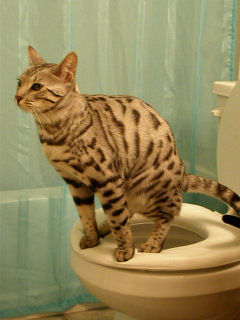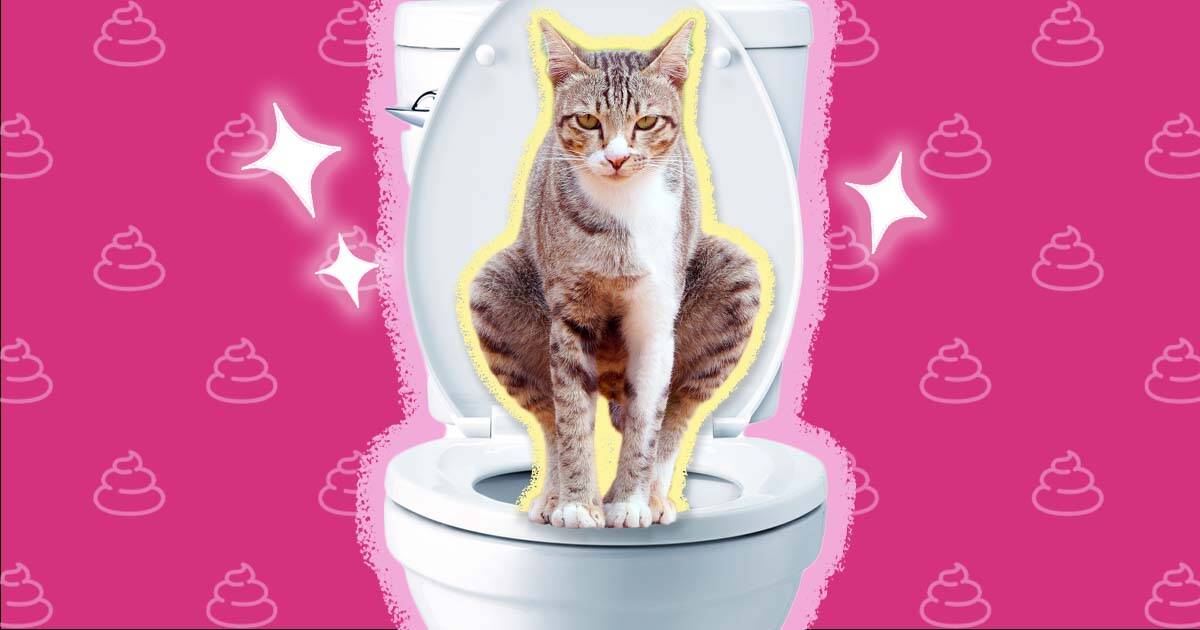We've found this great article on Should you flush animal waste down the toilet directly below on the net and accepted it made perfect sense to discuss it with you on this site.

When it pertains to dealing with waste, especially animal waste, many people commonly turn to the hassle-free alternative of flushing it down the commode. Nevertheless, this seemingly easy solution can have significant consequences for the environment and public health. In this short article, we'll discover why flushing pet waste down the commode is a negative concept and provide alternative methods for proper disposal.
Introduction
Proper garbage disposal is vital for preserving environmental sustainability and public health. While it may seem safe to purge animal waste down the bathroom, it can lead to numerous concerns, both for the atmosphere and human well-being.
Risks of flushing pet waste
Environmental influence
Purging animal waste presents damaging bacteria and virus into waterways, which can adversely impact marine environments. These virus can pollute water resources and harm aquatic life, disrupting fragile ecosystems.
Public health problems
Animal waste consists of damaging microorganisms such as E. coli and Salmonella, which can posture significant health risks to humans. Flushing animal waste down the toilet can contaminate water supplies, leading to the spread of diseases and infections.
Alternatives to flushing
Instead of purging pet waste down the bathroom, there are several alternative disposal methods that are more eco-friendly and sanitary.
Composting
Composting animal waste is an environmentally friendly means to take care of it. By composting, raw material is broken down into nutrient-rich dirt, which can be used to fertilize yards and plants.
Land fill disposal
Getting rid of animal waste in a land fill is one more option. While not as eco-friendly as composting, it is a safer option to flushing, as it prevents the contamination of water resources.
Pet garbage disposal systems
There are specialized pet dog garbage disposal systems readily available that securely and hygienically throw away animal waste. These systems typically use enzymes to break down waste and eliminate smells.
Steps to appropriate animal garbage disposal
To make sure appropriate disposal of animal waste, adhere to these actions:
Scooping and landing waste
Frequently scoop and bag animal waste making use of eco-friendly bags. This prevents waste from contaminating the setting.
Utilizing marked waste bins
Dispose of bagged pet waste in marked waste containers, such as garden compost containers or land fill bins. Stay clear of flushing it down the commode in any way expenses.
Cleaning can and pet dog areas regularly
On a regular basis tidy can and pet dog locations to prevent the build-up of waste and bacteria. Use pet-safe cleaning products to keep health.
Advantages of correct disposal approaches
Embracing proper disposal techniques for pet waste offers several advantages:
Reduced environmental pollution
Proper disposal approaches lower the danger of environmental pollution, securing rivers and ecosystems from contamination
Decreased danger of water contamination.
By avoiding flushing animal waste down the bathroom, the danger of water contamination is substantially decreased, securing public health.
Improved hygiene and health
Correct disposal approaches advertise far better cleanliness and health, producing a much safer environment for both human beings and pets.
Conclusion
To conclude, flushing pet waste down the toilet is hazardous to the setting and public health. By adopting different disposal methods and complying with proper waste monitoring get more info practices, we can lessen the negative impact of pet waste and add to a cleaner, much healthier planet.
Why You Should Never Flush Cat Poop Down the Toilet
A rose by any other name might smell as sweet, but not all poop is created equal. Toilets, and our sewage systems, are designed for human excrement, not animal waste. It might seem like it couldn’t hurt to toss cat feces into the loo, but it’s not a good idea to flush cat poop in the toilet.
First and foremost, assuming your cat uses a litter box, any waste is going to have litter on it. And even the smallest amount of litter can wreak havoc on plumbing.
Over time, small amounts build up, filling up your septic system. Most litter sold today is clumping; it is made from a type of clay that hardens when it gets wet. Ever tried to scrape old clumps from the bottom of a litter box? You know just how cement-hard it can get!
Now imagine just a small clump of that stuck in your pipes. A simple de-clogger like Drano isn’t going to cut it. And that means it’s going to cost you big time to fix it.
For an amusing, graphic tale of what happens when you flush too much litter down the toilet all at once, take a few minutes to read Gene Weingarten’s 2017 Washington Post column “So that’s what happens when you flush cat litter down the toilet.”
Parasitic Contamination
Believe it or not, your healthy kitty may be harboring a nasty parasite. Only cats excrete Toxoplasma in their feces. Yet it rarely causes serious health issues in the cats that are infected. Most people will be fine too if infected. Only pregnant women and people with compromised immune systems are at risk. (If you’ve ever heard how women who are expecting are excused from litter cleaning duty, Toxoplasma is why.)
But other animals may have a problem if infected with the parasite. And human water treatment systems aren’t designed to handle it. As a result, the systems don’t remove the parasite before discharging wastewater into local waterways. Fish, shellfish, and other marine life — otters in particular — are susceptible to toxoplasma. If exposed, most will end up with brain damage and many will die.
Depending on the species of fish, they may end up on someone’s fish hook and, ultimately on someone’s dinner plate. If that someone has a chronic illness, they’re at risk.
Skip the Toilet Training
We know there are folks out there who like to toilet train their cats. And we give them props, it takes a lot of work. But thanks to the toxoplasma, it’s not a good idea.
Leave the toilet to the humans, and accept your future litter cleaning duty.

On a regular basis tidy can and pet dog locations to prevent the build-up of waste and bacteria. Use pet-safe cleaning products to keep health.
Advantages of correct disposal approaches
Embracing proper disposal techniques for pet waste offers several advantages:
Reduced environmental pollution
Proper disposal approaches lower the danger of environmental pollution, securing rivers and ecosystems from contamination
Decreased danger of water contamination.
By avoiding flushing animal waste down the bathroom, the danger of water contamination is substantially decreased, securing public health.
Improved hygiene and health
Correct disposal approaches advertise far better cleanliness and health, producing a much safer environment for both human beings and pets.
Conclusion
To conclude, flushing pet waste down the toilet is hazardous to the setting and public health. By adopting different disposal methods and complying with proper waste monitoring get more info practices, we can lessen the negative impact of pet waste and add to a cleaner, much healthier planet.
Why You Should Never Flush Cat Poop Down the Toilet
A rose by any other name might smell as sweet, but not all poop is created equal. Toilets, and our sewage systems, are designed for human excrement, not animal waste. It might seem like it couldn’t hurt to toss cat feces into the loo, but it’s not a good idea to flush cat poop in the toilet.
First and foremost, assuming your cat uses a litter box, any waste is going to have litter on it. And even the smallest amount of litter can wreak havoc on plumbing.
Over time, small amounts build up, filling up your septic system. Most litter sold today is clumping; it is made from a type of clay that hardens when it gets wet. Ever tried to scrape old clumps from the bottom of a litter box? You know just how cement-hard it can get!
Now imagine just a small clump of that stuck in your pipes. A simple de-clogger like Drano isn’t going to cut it. And that means it’s going to cost you big time to fix it.
For an amusing, graphic tale of what happens when you flush too much litter down the toilet all at once, take a few minutes to read Gene Weingarten’s 2017 Washington Post column “So that’s what happens when you flush cat litter down the toilet.”
Parasitic Contamination
Believe it or not, your healthy kitty may be harboring a nasty parasite. Only cats excrete Toxoplasma in their feces. Yet it rarely causes serious health issues in the cats that are infected. Most people will be fine too if infected. Only pregnant women and people with compromised immune systems are at risk. (If you’ve ever heard how women who are expecting are excused from litter cleaning duty, Toxoplasma is why.)
But other animals may have a problem if infected with the parasite. And human water treatment systems aren’t designed to handle it. As a result, the systems don’t remove the parasite before discharging wastewater into local waterways. Fish, shellfish, and other marine life — otters in particular — are susceptible to toxoplasma. If exposed, most will end up with brain damage and many will die.
Depending on the species of fish, they may end up on someone’s fish hook and, ultimately on someone’s dinner plate. If that someone has a chronic illness, they’re at risk.
Skip the Toilet Training
We know there are folks out there who like to toilet train their cats. And we give them props, it takes a lot of work. But thanks to the toxoplasma, it’s not a good idea.
Leave the toilet to the humans, and accept your future litter cleaning duty.

As a passionate person who reads on Should you flush animal waste down the toilet, I think sharing that piece of content was important. So long as you appreciated our page please consider to pass it around. Thank you for being here. Revisit us soon.
Article